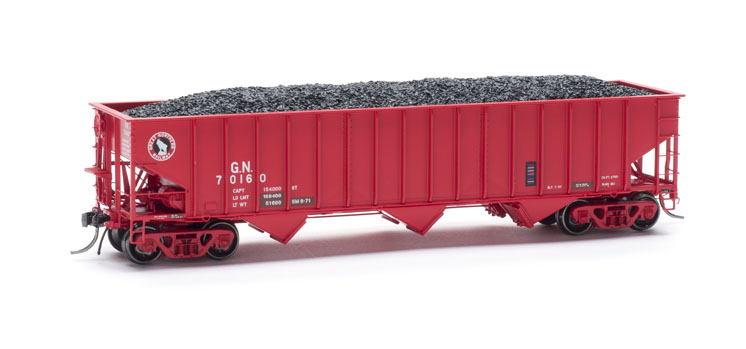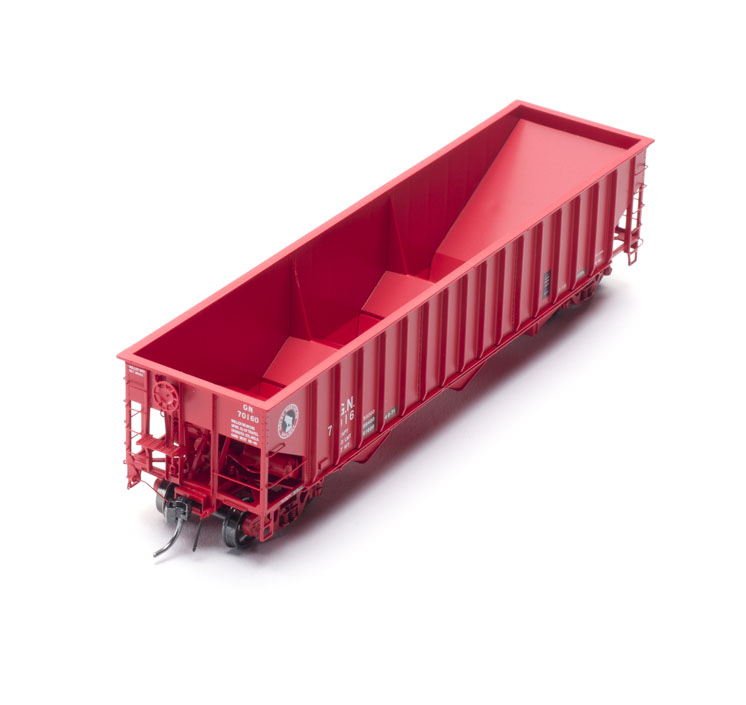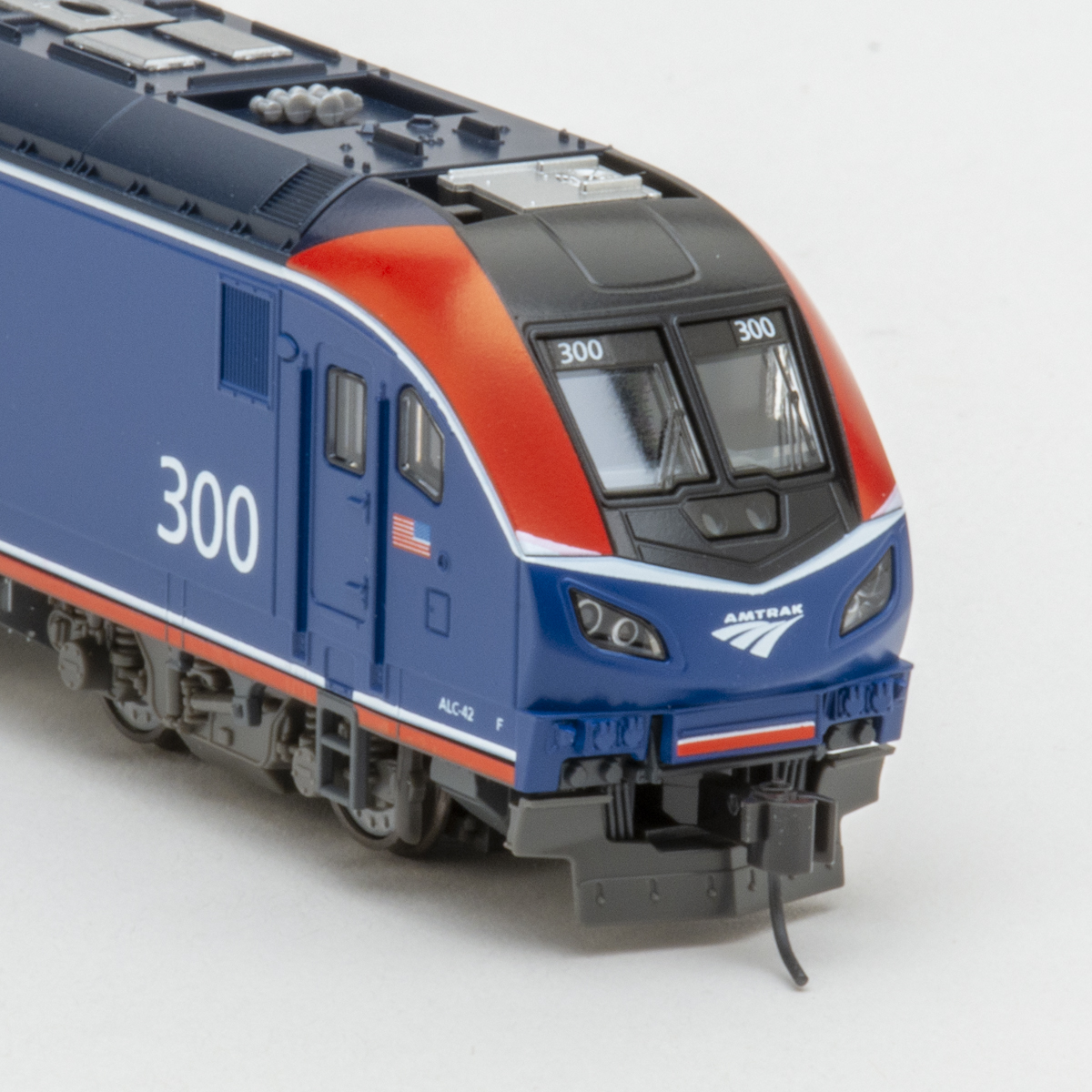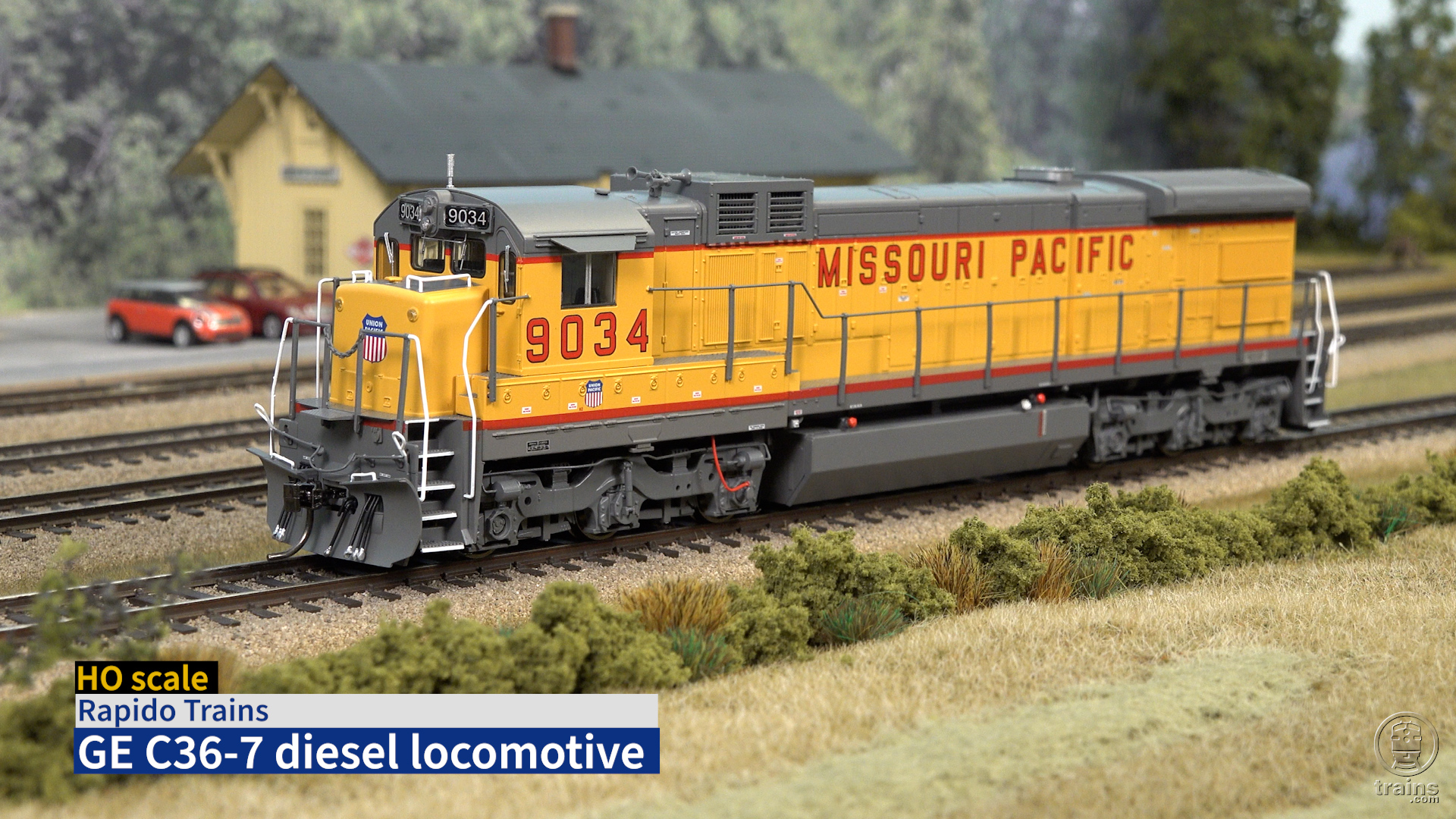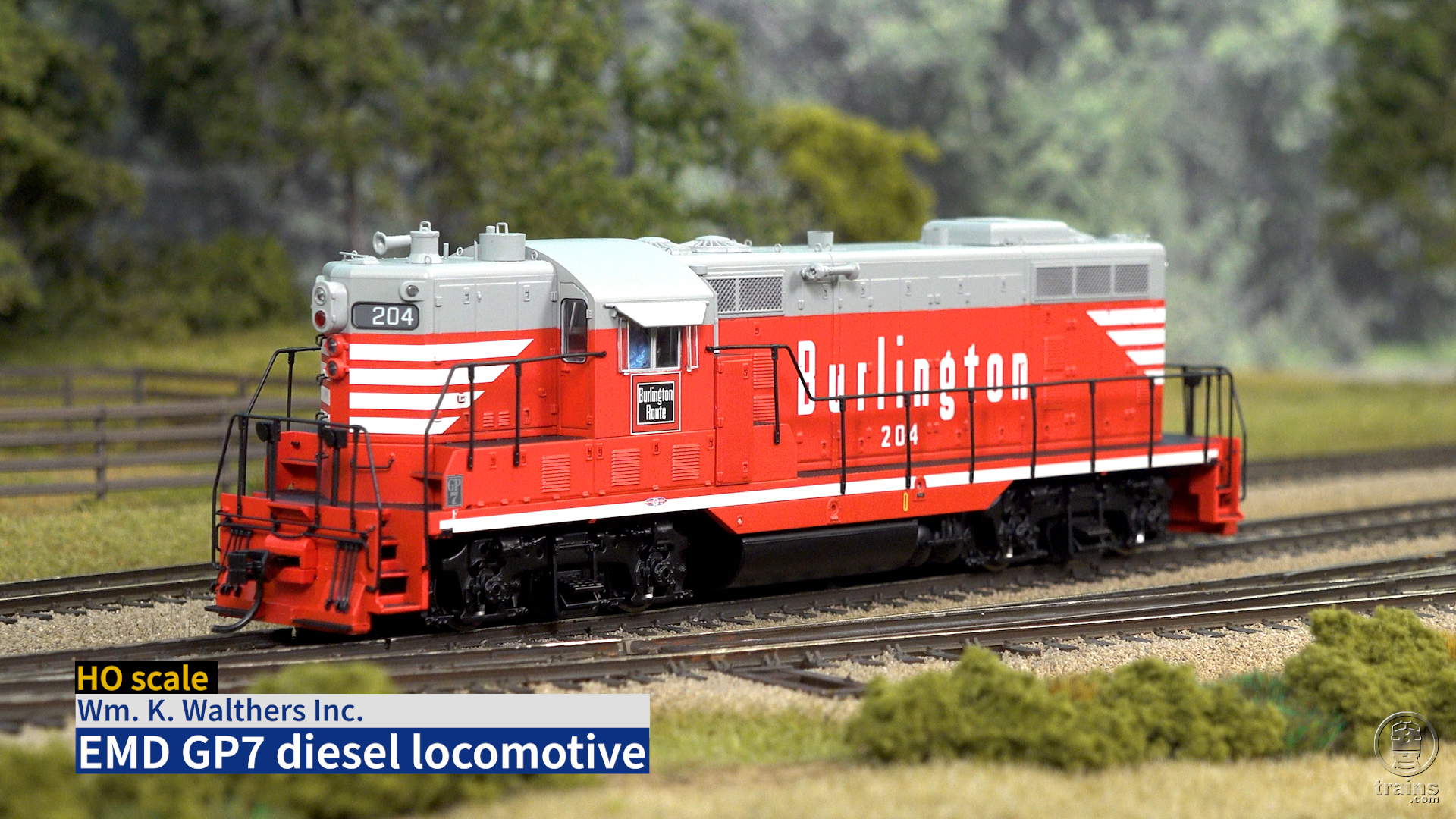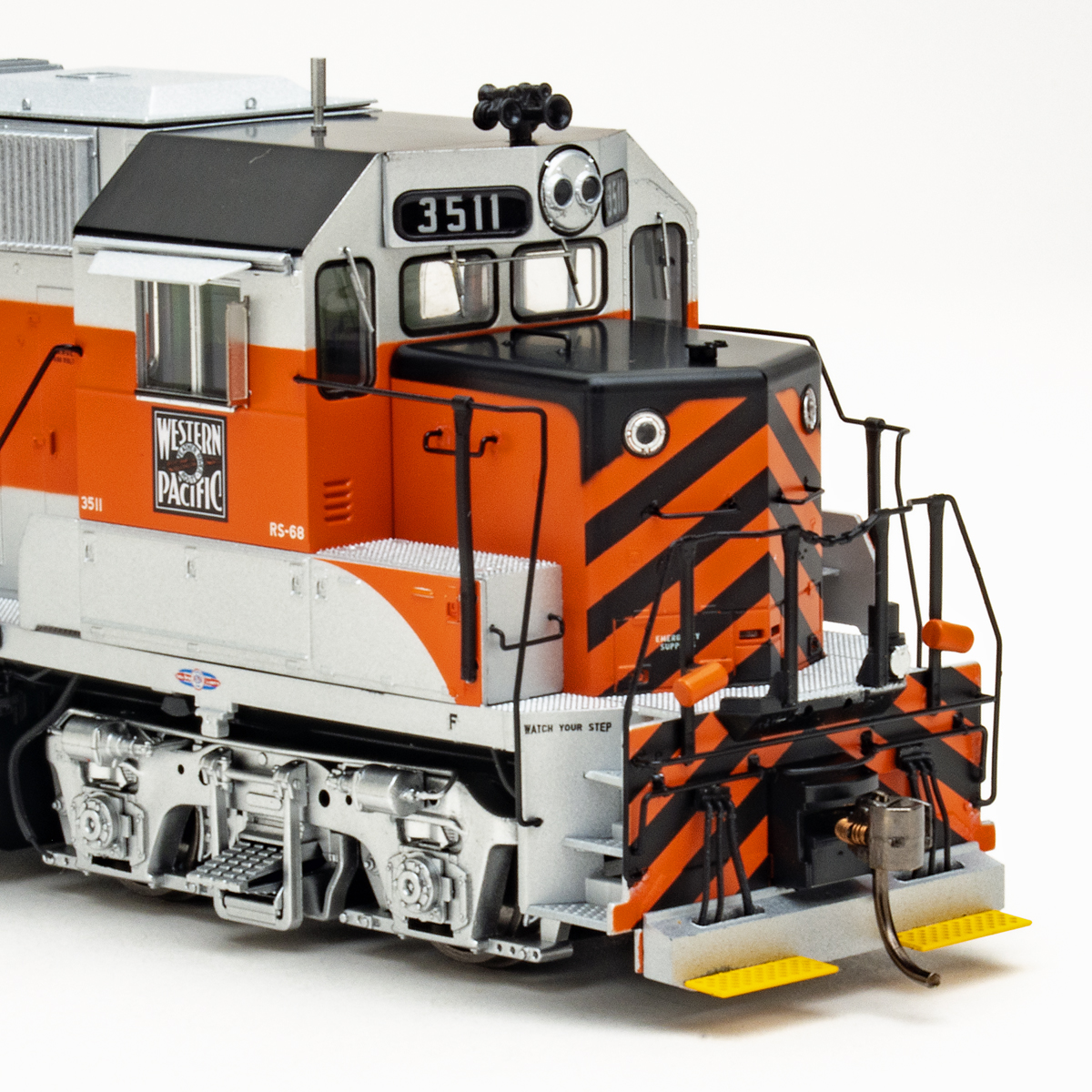Tangent Scale Models has released its HO scale Pullman-Standard PS-3 2,750-cubic-foot-capacity three-bay hopper in seven new paint schemes. The injection-molded plastic HO scale car features prototype-specific unloading door mechanisms, handbrake variations, and trucks; factory-installed and painted wire grab irons and uncoupling levers; and a removable plastic coal load.
Our sample is decorated as Great Northern no. 70160, part of the railroad’s 70000 through 70299 series built by Pullman-Standard in 1957. Pullman-Standard built a second batch of 2750s for the GN in 1960, numbered 70300 through 70399. In addition, GN leased 150 ex-Boston & Maine 2750s from United States Railway Equipment in 1965. The three-bay hoppers were primarily used to haul coal, but also transported coke, sugar beets, and aggregates.
This run of GN hoppers are decorated in the 1966 Vermillion Red repaint scheme, without the Great Northern lettering across the car side. Our sample has 1970s era reweigh data, with brown patches under the new load limit and light weight. The BM 8-71 stencil indicates the reweigh was done at Mandan, N.D., in August 1971.
The Tangent car is well designed, with a one-piece body and separate sill. Steel weights are concealed between the car’s exterior and plastic slope sheets inside the car. Additional smaller weights, painted to match the body color, are located inboard of the bolster on each end. The unloading door mechanisms, brake appliances, and related piping are separate, factory-applied parts.
The model closely follows prototype drawings published in the Great Northern Railway Historical Society Reference Sheet no. 257: Great Northern Open Hopper Cars Numbers 70000-70949. The model is equipped with Barber S-2-A roller-bearing trucks; as-built the GN cars rode on National C-1 trucks. Interior rivet detail was omitted, but this makes it easier to insert and remove the coal load.
A feature not included, perhaps because of molding limitations, are the vertical indentures in the side sheets between the exterior posts. Pullman-Standard sales literature indicates these were added to “minimize flutter under shake-out machine use and increase service life of sides.”
I ran the hopper in a train on our staff’s Wisconsin & Southern layout. The car performed without incident while being pushed and pulled through no. 5 turnouts and 30″ radius curves.
The Pullman-Standard PS-3 2,750- cubic-foot-capacity three-bay hopper was a workhorse car for many railroads. A solid train of Tangent Scale Models hoppers, or even a cut in a manifest freight, would look good on any HO layout set between 1957 and the 1990s.
Facts & Features
Price: $38.95
Manufacturer
Tangent Scale Models
P.O. Box 6514
Asheville, NC 28816
tangentscalemodels.com
Era: 1971 to 1999 (as decorated)
Road names: Great Northern (1970s reweigh [three month/year combinations] and 6-1965 Vermillion Red repaint in six road numbers), Boston & Maine (1972 repaint), Burlington Northern (7-1976 repaint), Louisville & Nashville (1959 “Dixie Line” scheme in 12 numbers and 9-1973 SLS repaint in six numbers), and Southern Ry. (1-1958 original red in six numbers). Three numbers per scheme unless noted; also available ready-to-run in gray primer and as undecorated kit.





